Storytelling in web design is such a powerful tool in the competitive landscape of B2B web design that it eclipses traditional marketing techniques. One feels that the ability to weave narratives into design captures attention and creates meaningful connections with an audience. Storytelling in web design engages users on an emotional level, enabling businesses to communicate their values, vision, and offerings more effectively. As organizations strive to differentiate themselves, leveraging storytelling can turn a mundane website into an immersive experience that resonates with potential clients and partners.
Research highlights that effective storytelling can enhance user experience by providing context and fostering relatability. When users encounter a website that tells a compelling story, they are more likely to stay engaged, explore the content, and ultimately take action. Key elements, such as visuals, brand identity, and user-centric narratives, play a crucial role in this process. By integrating storytelling into the design, businesses can guide users through their journey, ensuring that their message is not only heard but felt. This strategic approach not only improves engagement rates but also fosters trust and loyalty among clients.
The impact of storytelling on B2B websites extends beyond initial impressions. It influences how users perceive a brand, shaping their understanding and emotional connection over time. As organizations begin to harness the power of narratives, they must also recognize the importance of data-driven insights in crafting their stories. By analyzing user behavior and preferences, businesses can refine their storytelling strategies to align with audience expectations and market trends. In this blog, we will explore the multifaceted role of storytelling in B2B web design, examining its significance, best practices, and the impact it can have on achieving business goals.
Table of Contents
What is Storytelling in Web Design?
Storytelling in web design is the art of conveying a brand’s message through a structured narrative, integrating visual elements and content to create an engaging experience. It transcends mere information delivery, transforming a static webpage into an interactive story that resonates with users on an emotional level. By incorporating storytelling into web design, businesses can capture their audience’s attention, making the content more relatable and memorable. This approach helps in effectively communicating complex ideas or services, especially in the B2B sector, where clarity and connection are crucial.
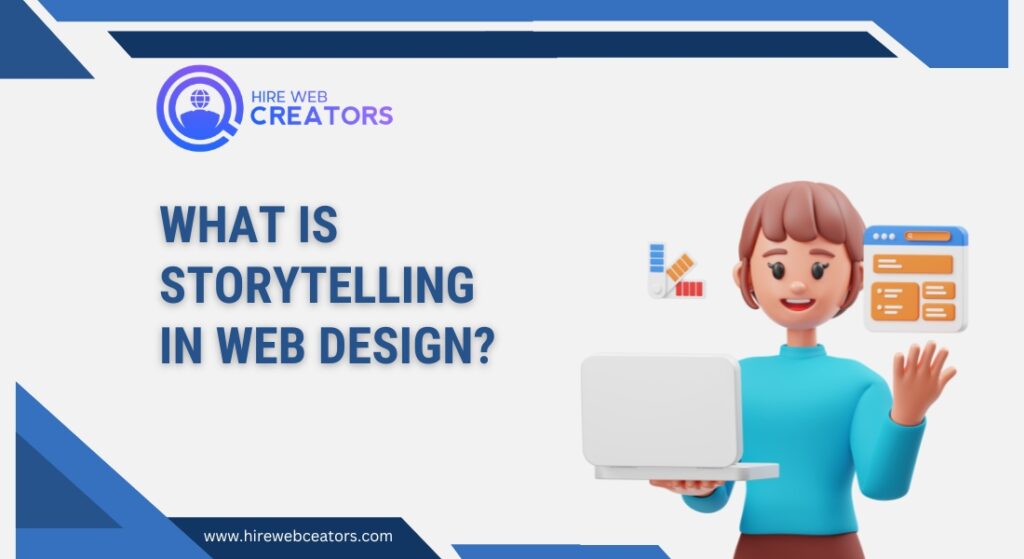
At its core, storytelling in web design involves several key components that enhance the overall user experience. These include character development, a clear plot, and a resolution that aligns with the brand’s goals. By presenting a relatable protagonist—often the customer or client—web designers can illustrate challenges and solutions that resonate with the target audience. Furthermore, utilizing visual elements such as images, videos, and infographics can reinforce the narrative, making it more dynamic and engaging. This combination not only enhances user interaction but also fosters a deeper understanding of the brand’s mission and values.
Storytelling in web design allows for a cohesive brand identity. When a website tells a consistent story, it strengthens the brand’s voice and personality, helping to differentiate it from competitors. As visitors navigate through the site, they encounter a well-crafted narrative that reflects the company’s ethos, thus building trust and loyalty. This integrated approach to storytelling ensures that visitors leave with a clear understanding of the brand’s offerings and how they relate to their own needs, ultimately driving engagement and conversions. As we delve further into this topic, we will explore the importance of storytelling in B2B websites and how it can elevate user experience and brand perception.
Why is Storytelling Important for B2B Websites?
Storytelling is vital for B2B websites because it transforms abstract concepts into tangible narratives that resonate with target audiences. In an industry often dominated by technical jargon and complex services, storytelling in web design serves as a bridge between businesses and their clients. It helps demystify intricate offerings by placing them within relatable contexts, making it easier for potential clients to understand the value proposition. By presenting information through a narrative lens, B2B companies can humanize their brand and create emotional connections, which are essential for building trust and credibility.
Storytelling in web design enhances the overall user experience, leading to higher engagement rates and improved customer retention. When visitors encounter a website that tells a compelling story, they are more likely to stay longer, explore further, and ultimately convert. Engaging narratives captivate attention and encourage users to interact with the content, whether through clicking on calls to action, signing up for newsletters, or sharing the content across social media platforms. This interaction is crucial in the B2B landscape, where nurturing relationships is key to long-term success.
Effective storytelling in web design plays a significant role in differentiating a brand from its competitors. In a saturated market, businesses must leverage their unique narratives to stand out and make a lasting impression. By showcasing their history, mission, and values through storytelling, B2B companies can articulate what makes them unique. This clarity not only attracts new clients but also fosters loyalty among existing ones, as customers feel more connected to brands that communicate their stories authentically. As we continue to explore this topic, we will delve deeper into how storytelling enhances user experience and strengthens brand identity in B2B web design.
How Can Storytelling Enhance User Experience?
Storytelling in web design significantly enhances user experience by creating immersive and engaging environments that keep visitors intrigued and invested in the content. When users land on a website, they are often looking for more than just information; they want to connect with the brand on a deeper level. By weaving narratives into the design, businesses can guide users through a structured journey, helping them understand the brand’s offerings while enjoying a cohesive and meaningful experience. This approach allows users to visualize themselves in the story, making the content more relatable and impactful.
Storytelling in web design helps establish emotional connections between the brand and its audience. By using characters, relatable scenarios, and compelling visuals, brands can evoke emotions that resonate with their target market. This emotional engagement is crucial for fostering loyalty and encouraging repeat visits. When users feel a connection to the story being told, they are more likely to share their experiences with others, amplifying the brand’s reach and impact. This word-of-mouth marketing is invaluable, particularly in the B2B sector, where referrals often lead to new business opportunities.
Storytelling in web design allows for a seamless flow of information, making it easier for users to navigate and digest complex content. A well-structured narrative guides users through the site, ensuring they receive the necessary information without feeling overwhelmed. This thoughtful arrangement of content not only improves usability but also encourages users to explore further, leading to higher engagement rates and ultimately driving conversions. As we proceed, we will examine the key elements that contribute to effective storytelling in web design and how they can be leveraged to enhance user experience.
What Elements Make Up a Compelling Story?
A compelling story in web design is built upon several key elements that work together to create an engaging narrative. At its core, storytelling in web design requires a clear structure that includes a beginning, middle, and end. The beginning typically introduces the main character—often the target audience or a representation of their challenges. This character’s journey unfolds through the narrative, highlighting the problems they face and the solutions the brand offers. A well-defined structure helps users easily follow the story, making the information more digestible and relatable.
Character development is another essential element of effective storytelling in web design. The characters should embody the audience’s aspirations, challenges, and motivations. By focusing on relatable protagonists, businesses can create a strong emotional connection with their users. When users see themselves in the story, they are more likely to engage with the content and feel invested in the brand’s narrative. Additionally, incorporating diverse characters can broaden the appeal of the story, making it resonate with a wider audience and reinforcing the brand’s commitment to inclusivity.
Visual elements play a critical role in enhancing storytelling in web design. Images, videos, infographics, and animations can vividly illustrate the narrative, making it more engaging and memorable. These visual aids not only support the storyline but also break up large blocks of text, improving readability and overall user experience. By thoughtfully integrating visuals with the narrative, businesses can create a more immersive experience that captivates users’ attention and drives home their message. As we explore further, we will discuss how to effectively use visuals to support storytelling in web design.
How to Use Visuals to Support Your Narrative?
Visuals play a pivotal role in enhancing storytelling in web design by complementing and reinforcing the narrative presented on the website. When integrated effectively, images, videos, and graphics can captivate users’ attention and facilitate a deeper understanding of the brand’s message. The use of visuals allows designers to illustrate key points, evoke emotions, and create a more dynamic user experience. By aligning visuals with the narrative, businesses can create a cohesive storytelling experience that resonates with their audience and keeps them engaged.
Incorporating visuals in storytelling in web design also aids in breaking down complex information into easily digestible formats. For instance, infographics can convey statistical data or processes in a visually appealing manner, making it simpler for users to grasp essential concepts. Similarly, videos can bring stories to life, offering a more immersive experience that text alone may not provide. By providing a multi-sensory experience, visuals enhance the narrative and create a lasting impression on users, encouraging them to share the content and engage further with the brand.
The strategic use of visuals can help establish a strong brand identity within the context of storytelling in web design. Consistent visual elements—such as color schemes, typography, and graphic styles—reinforce the brand’s message and personality. By maintaining a cohesive visual narrative, businesses can strengthen their brand recognition and create a sense of familiarity with their audience. As we continue our exploration, we will examine the crucial role that brand identity plays in storytelling and how it can enhance the overall effectiveness of web design.
What Role Does Brand Identity Play in Storytelling?
Brand identity is a fundamental aspect of storytelling in web design, serving as the backbone of the narrative and shaping how audiences perceive a business. A strong brand identity encompasses elements such as logos, color palettes, typography, and tone of voice, all of which contribute to the overall storytelling experience. When these elements are consistently applied throughout the website, they create a cohesive narrative that resonates with users. This alignment ensures that the story being told is not only engaging but also authentically reflects the brand’s values and mission.
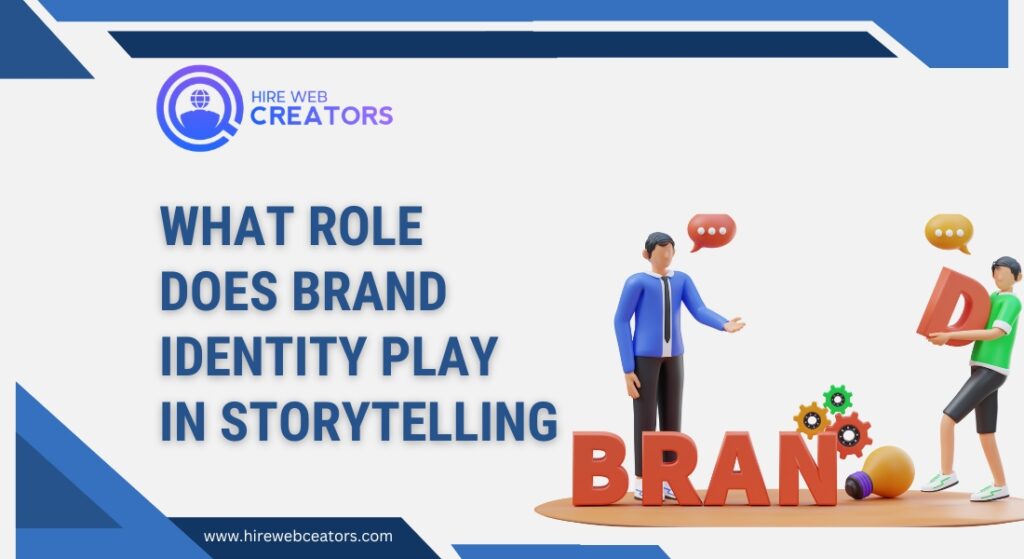
In the context of storytelling in web design, brand identity helps establish trust and credibility with the audience. A well-defined brand identity signals professionalism and reliability, essential qualities for B2B companies seeking to forge lasting relationships. When users encounter a narrative that aligns with a brand’s identity, they are more likely to feel confident in their decision to engage with the company. This trust is particularly important in the B2B sector, where clients often rely on relationships and reputation when choosing partners or vendors.
Storytelling in web design allows brands to differentiate themselves from competitors by showcasing their unique identity. By weaving the brand’s values, mission, and personality into the narrative, businesses can highlight what sets them apart in the market. This differentiation is crucial for attracting and retaining clients, as it provides a clear understanding of how the brand can meet their specific needs. As we delve deeper into this topic, we will explore how data can influence storytelling strategies and enhance the effectiveness of web design.
How Can Data Influence Your Storytelling Strategy?
Data plays a crucial role in shaping storytelling in web design, providing insights that can refine narratives and enhance user engagement. By analyzing user behavior, preferences, and demographics, businesses can tailor their storytelling strategies to resonate more effectively with their target audience. This data-driven approach allows organizations to identify what elements of their narrative are most compelling and which aspects may need adjustment to better align with user interests. Ultimately, leveraging data ensures that the story told through the website is relevant and impactful, increasing the likelihood of conversion and customer retention.
Incorporating analytics into storytelling in web design also enables businesses to measure the effectiveness of their narratives. Metrics such as engagement rates, time spent on page, and click-through rates provide valuable feedback on how users are interacting with the content. By understanding which parts of the story captivate the audience and which do not, organizations can make informed decisions about content adjustments and enhancements. This iterative process of testing and refining narratives based on data fosters a more user-centered approach, ultimately leading to a more engaging and effective web experience.
Data can help identify trends and emerging topics within the industry, allowing businesses to adapt their storytelling in web design to address current issues and opportunities. By staying attuned to what matters most to their audience, brands can ensure their narratives remain relevant and timely. This adaptability not only strengthens the brand’s connection with its audience but also positions it as a thought leader within its industry. As we continue our exploration of storytelling in web design, we will look at effective examples that showcase how compelling narratives can be successfully implemented.
What are Effective Examples of Storytelling in Web Design?
Effective examples of storytelling in web design illustrate how brands can successfully integrate narratives to engage their audiences and enhance their online presence. One notable example is Airbnb, which employs storytelling to create a sense of belonging and community among its users. The company’s website features user-generated stories and experiences that highlight the unique journeys of travelers and hosts. By showcasing real-life narratives, Airbnb connects with its audience on an emotional level, making the platform more relatable and inviting. This approach not only enhances user engagement but also reinforces the brand’s core message of belonging anywhere.
Another compelling instance of storytelling in web design can be seen in the website of Apple. The company skillfully uses visual storytelling to showcase its products, focusing on how they enhance users’ lives. Through sleek imagery and succinct narratives, Apple highlights the innovative features of its devices while positioning them as essential tools for creativity and productivity. This storytelling approach not only informs potential customers about the products but also evokes an emotional response, leading to stronger brand loyalty. Apple’s consistent application of storytelling principles helps maintain a cohesive brand identity across all platforms.
The nonprofit organization Charity: Water effectively employs storytelling in web design to convey its mission and impact. The website features powerful narratives and visuals that highlight the stories of individuals and communities affected by water scarcity. By illustrating the real-world impact of donations through compelling narratives, Charity: Water creates a strong emotional connection with its audience, motivating them to contribute to the cause. This strategic use of storytelling enhances user experience while effectively communicating the organization’s mission. As we delve further into this topic, we will explore how to measure the impact of storytelling on user engagement and conversions.
How to Measure the Impact of Storytelling on Engagement?
Measuring the impact of storytelling in web design on user engagement is essential for understanding its effectiveness and refining future narratives. Various metrics can be employed to gauge how well a story resonates with the audience. Key performance indicators (KPIs) such as time on page, bounce rates, and scroll depth provide valuable insights into user interaction with the content. By analyzing these metrics, businesses can determine which elements of their storytelling strategy are successful and which may require improvement, ensuring a more engaging experience for users.
Qualitative feedback plays a vital role in assessing the impact of storytelling in web design. User surveys and feedback forms can provide insights into how visitors perceive the narrative and its relevance to their needs. Gathering this information helps organizations understand the emotional connection users feel with the story, which is crucial for building brand loyalty. By combining quantitative and qualitative data, businesses can gain a comprehensive understanding of how storytelling influences user engagement and identify opportunities for enhancement.
A/B testing is an effective method for measuring the impact of storytelling in web design. By comparing different narrative approaches or visual elements, businesses can evaluate which versions resonate more with their audience. This iterative process enables organizations to optimize their storytelling strategies based on real user behavior and preferences. As we explore the topic further, we will discuss tools and techniques that can assist businesses in implementing effective storytelling within their web design processes.
What Tools and Techniques Can Help You Implement Storytelling?
Implementing storytelling in web design requires a thoughtful approach, utilizing various tools and techniques that enhance the narrative and engage users. One essential tool for creating visually compelling narratives is graphic design software, such as Adobe Creative Suite or Canva. These platforms enable designers to create stunning visuals, infographics, and layouts that complement the story being told. By leveraging these tools, businesses can craft a cohesive visual identity that reinforces their narrative and captures the audience’s attention.
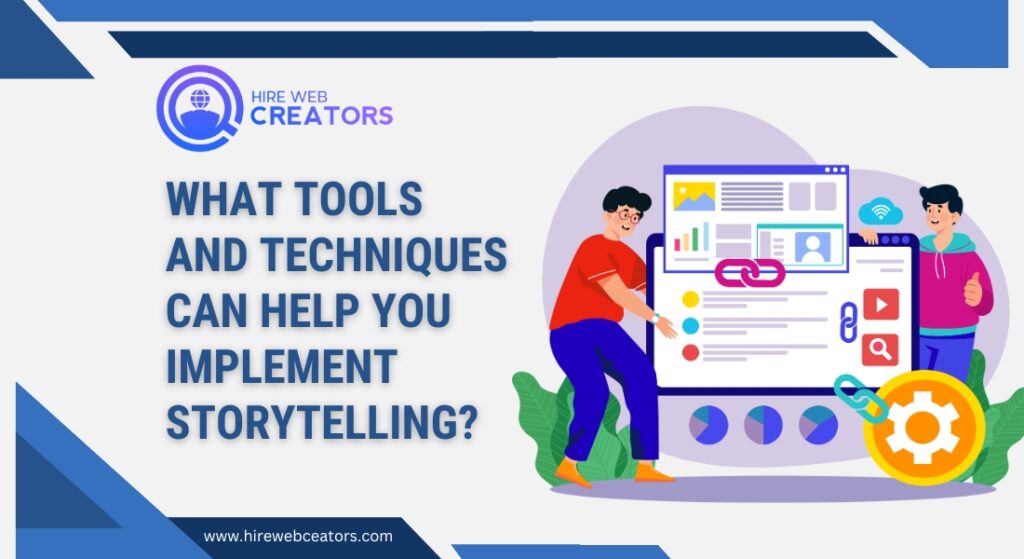
In addition to graphic design software, content management systems (CMS) with storytelling capabilities can facilitate the integration of narratives into web design. Platforms like WordPress, Squarespace, and Wix offer templates and features that enable users to incorporate multimedia elements, such as images, videos, and animations, into their stories. These CMS options allow businesses to create dynamic and engaging websites that effectively convey their messages while maintaining an intuitive user experience. This flexibility ensures that storytelling remains a central focus in the design process.
Analytics tools play a crucial role in optimizing storytelling in web design. Tools such as Google Analytics and Hotjar provide valuable insights into user behavior, allowing businesses to assess the effectiveness of their narratives and make data-driven adjustments. By tracking engagement metrics and user interactions, organizations can refine their storytelling strategies, ensuring they resonate with the target audience. As we conclude our exploration of storytelling in web design, we will discuss how to effectively integrate storytelling into the design process for maximum impact.
How to Integrate Storytelling in Your Design Process?
Integrating storytelling in the design process is essential for creating compelling and engaging B2B websites that resonate with users. The first step in this integration is to establish a clear narrative framework that aligns with the brand’s mission and values. This involves identifying the key message that the story aims to convey and defining the target audience. By understanding who the narrative is intended for, designers can tailor the storytelling elements to address the audience’s needs and preferences, ensuring a more impactful experience.
Once the narrative framework is established, collaboration between designers, writers, and marketers is crucial for effective storytelling in web design. This interdisciplinary approach allows for the seamless integration of visuals and content, ensuring that both elements work harmoniously to convey the intended message. Regular brainstorming sessions and feedback loops can facilitate the creative process, helping to refine the narrative and identify areas for improvement. By fostering collaboration, teams can create a more cohesive storytelling experience that captivates users and enhances overall engagement.
Prototyping and user testing are vital components of integrating storytelling in the design process. Creating wireframes and mockups that incorporate the narrative allows designers to visualize how the story will unfold on the website. User testing provides valuable feedback on how well the narrative resonates with the audience and how effectively it guides users through the site. By iterating on the design based on user insights, businesses can refine their storytelling approach, ensuring it is both engaging and effective. As we wrap up this exploration of storytelling in web design, we will discuss common mistakes to avoid to ensure successful narrative integration.
What are Common Mistakes to Avoid in Storytelling?
When implementing storytelling in web design, it is crucial to be aware of common mistakes that can undermine the effectiveness of the narrative. One significant pitfall is failing to align the story with the brand’s identity and values. If the narrative does not authentically reflect the brand, it can create confusion and erode trust among users. A cohesive storytelling approach should reinforce the brand’s message while remaining consistent across all elements of the website. Ensuring that every aspect of the story aligns with the brand’s identity is essential for creating a powerful and resonant narrative.
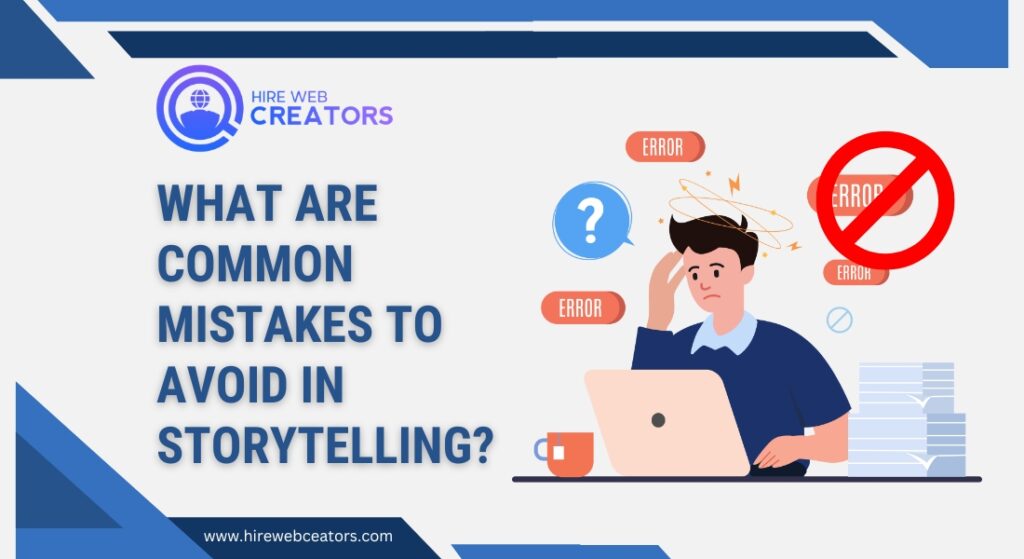
Another mistake to avoid in storytelling in web design is overwhelming users with excessive information. While it is important to convey key messages, bombarding visitors with too much content can lead to confusion and disengagement. A well-crafted story should balance providing enough information to inform users without cluttering the experience. Using concise language, clear visuals, and a structured narrative can help guide users through the story, making it easier for them to understand and connect with the brand’s message.
Neglecting to incorporate user feedback can hinder the effectiveness of storytelling in web design. If designers and marketers do not seek input from their target audience, they may miss valuable insights that could enhance the narrative. Regularly gathering user feedback through surveys, interviews, or usability testing allows businesses to refine their storytelling approach and ensure it resonates with their audience. By avoiding these common mistakes, brands can create more effective storytelling experiences that engage users and foster lasting connections. As we conclude our discussion on storytelling in web design, it’s essential to recognize that a well-executed narrative can significantly impact user engagement and brand perception.
How Can You Continuously Improve Your Storytelling?
Continuously improving storytelling in web design is vital for maintaining user engagement and ensuring that narratives remain relevant over time. One effective approach to achieving this is through ongoing analysis of user data and behavior. By leveraging analytics tools, businesses can gain insights into how users interact with their stories, including which elements capture attention and which do not. This data-driven approach allows organizations to identify trends and patterns that can inform future storytelling strategies, ultimately enhancing the user experience and driving conversions.
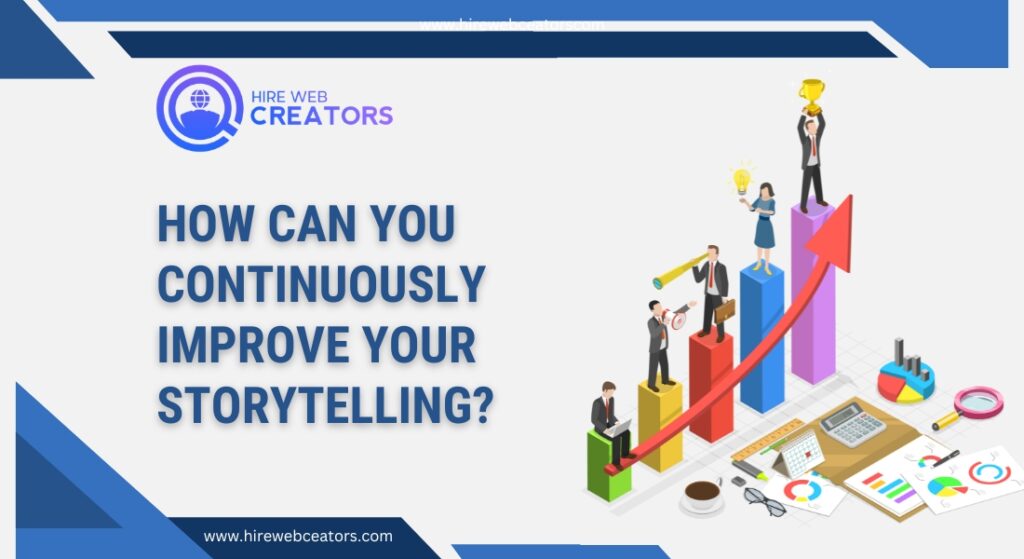
Soliciting feedback from users is essential for refining storytelling in web design. Gathering input through surveys, focus groups, or direct user testing can provide valuable insights into how the narrative resonates with the audience. By actively seeking feedback, businesses can uncover areas for improvement and make informed adjustments to their storytelling approach. This ongoing dialogue with users ensures that the narrative evolves in line with audience preferences, fostering a deeper connection and enhancing brand loyalty.
Updating industry trends and emerging storytelling techniques can help organizations continuously enhance their narratives. As design practices and user expectations evolve, adapting storytelling in web design to incorporate new methodologies or technologies like AI in B2B web development can keep the content fresh and engaging. Whether through integrating interactive elements, multimedia, or innovative design strategies, remaining adaptable and open to change allows businesses to maintain a dynamic storytelling approach that captivates users. As we conclude this exploration, it is evident that continuous improvement in storytelling is crucial for sustained user engagement and long-term brand success.
In conclusion, storytelling in web design is a powerful tool that can significantly enhance user engagement and strengthen brand identity. By crafting compelling narratives that resonate with the target audience, businesses can create emotional connections that foster trust and loyalty. As we have explored throughout this blog, effective storytelling involves a clear narrative structure, relatable characters, and impactful visuals, all working together to convey the brand’s message. When executed thoughtfully, storytelling can transform a standard website into an engaging experience that captivates visitors and encourages them to explore further.
The integration of data and user feedback plays a critical role in refining storytelling strategies in web design. By analyzing user behavior and gathering insights, organizations can continuously improve their narratives to ensure they remain relevant and resonate with their audience. This data-driven approach not only enhances the effectiveness of storytelling but also positions businesses to adapt to changing market dynamics and user expectations.









